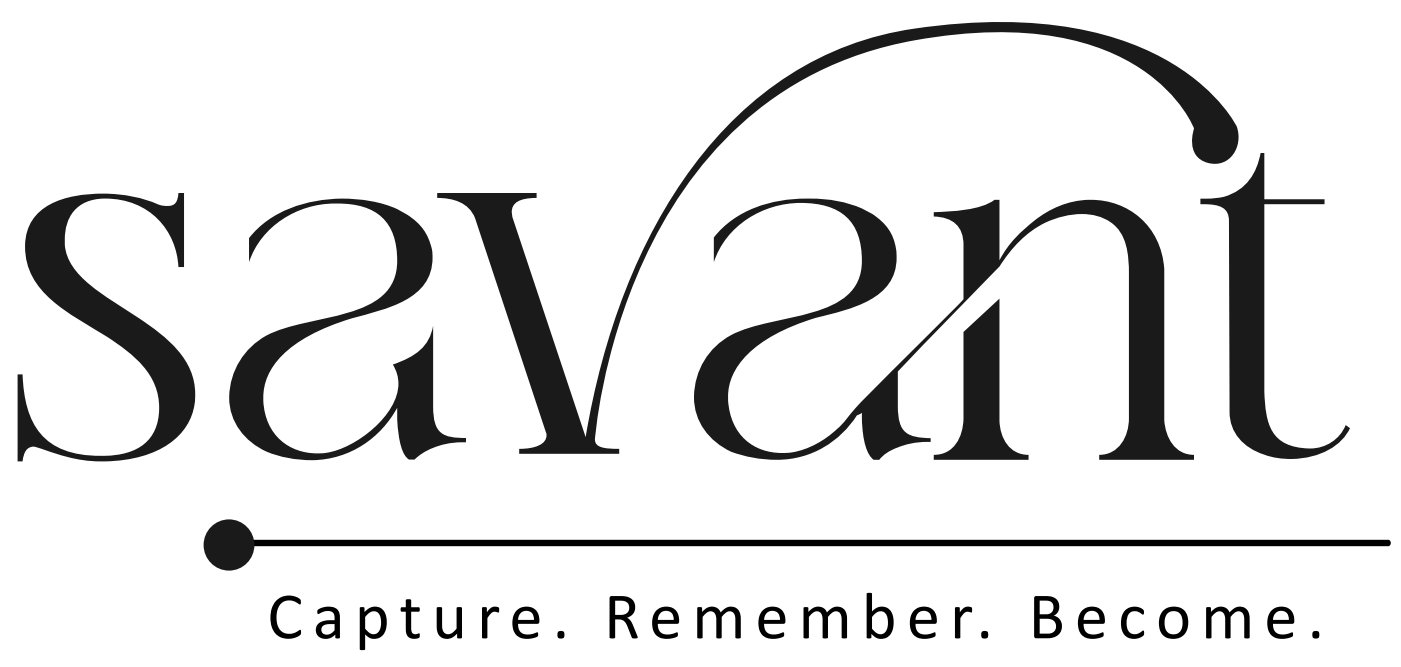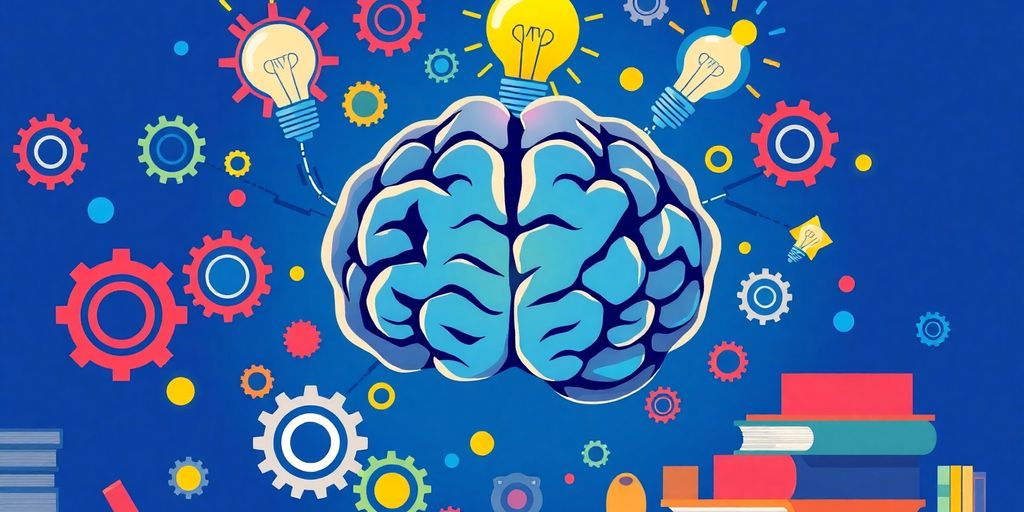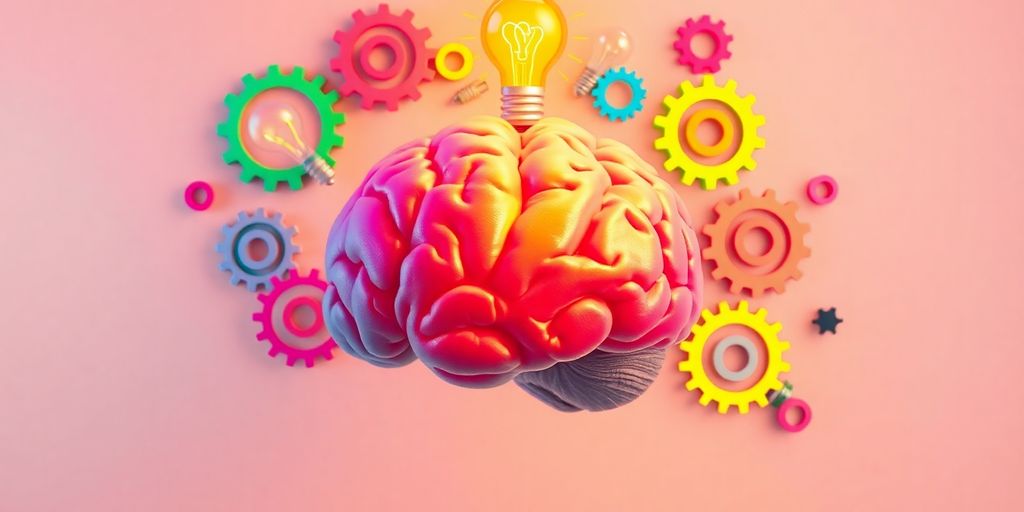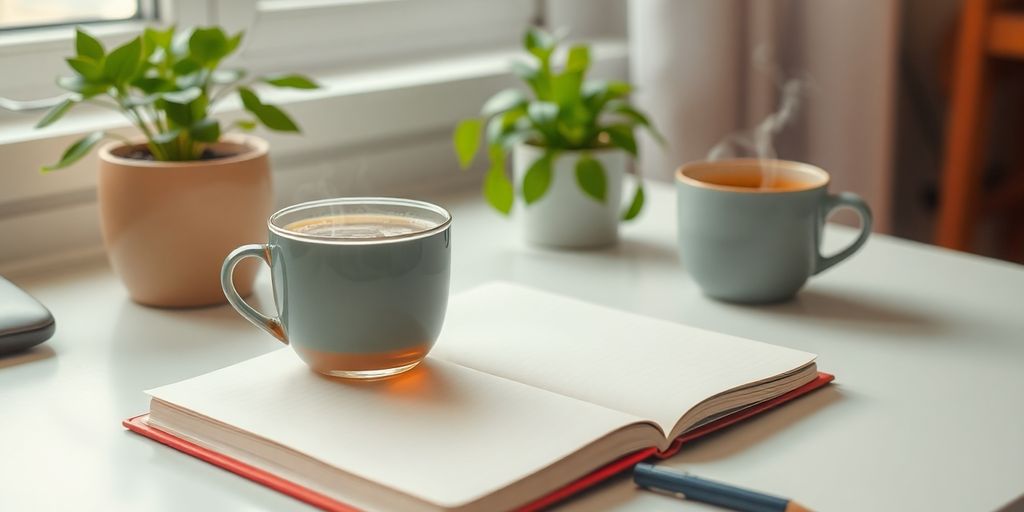Have you ever wished for a sharper memory? Whether you’re trying to remember important details for work, school, or just everyday life, a good memory can make everything easier. Thankfully, there are plenty of practical techniques to help you boost your memory skills. This article will share ten effective strategies for improving your memory, making it easier to retain and recall information when you need it most. Let’s dive in and explore these methods together!
Key Takeaways
- Memory can be improved with practice and the right techniques.
- Using visualizations can create stronger mental connections.
- Incorporating technology, like apps, can support memory training.
- Living a healthy lifestyle with good sleep and nutrition helps memory retention.
- Setting clear, achievable goals can enhance memory skills.
1. Mnemonic Devices
Okay, so you want to remember stuff better? Mnemonic devices are your new best friends! They’re basically memory tricks that help you link new information to things you already know. Think of them as little shortcuts for your brain. It’s like, instead of trying to remember a random string of numbers, you turn it into something meaningful. Let’s get into it.
Acronyms and Acrostics
Acronyms are super useful. You take the first letter of each word you want to remember and make a new word out of it. For example, remember the colors of the rainbow? ROYGBIV (Red, Orange, Yellow, Green, Blue, Indigo, Violet). Easy peasy! Acrostics are similar, but instead of making a word, you make a sentence. Like, "Every Good Boy Does Fine" to remember the notes on the lines of the treble clef. It’s all about making it memorable.
Rhymes and Songs
Ever notice how easy it is to remember song lyrics? That’s because rhymes and songs are super effective mnemonic devices! Try turning the information you want to remember into a catchy tune or a simple rhyme. It doesn’t have to be a masterpiece; it just needs to be something that sticks in your head. Think about those classic commercials with jingles you still remember years later – that’s the power of rhyme and song!
Visualization
Our brains love pictures! So, why not use that to your advantage? When you need to remember something, try creating a vivid mental image of it. The more bizarre and colorful, the better! If you’re trying to memorize a shopping list, picture a giant loaf of bread wearing sunglasses or a carton of milk tap-dancing. It sounds silly, but it works! By creating these mental movies, you’re making the information more memorable and engaging. It’s like giving your brain a fun, visual feast.
2. Spaced Repetition
Okay, so you’ve crammed for a test before, right? We all have. But what if I told you there’s a way to actually remember stuff long-term, without pulling all-nighters? That’s where spaced repetition comes in. It’s all about reviewing information at increasing intervals. Think of it like this: instead of trying to gulp down a whole pizza at once, you’re savoring a slice every few hours. Much easier to digest, right?
Spaced repetition is a learning technique where you review information at increasing intervals over time. This method takes advantage of the spacing effect, which basically means you remember things better when you review them with time in between. It’s not just about repeating; it’s about repeating smart.
Here’s a simple way to think about it:
- Learn something new.
- Review it shortly after (maybe an hour or so).
- Review it again the next day.
- Then, review it a few days later.
- Keep increasing the intervals between reviews.
It might sound like a lot of work, but trust me, it’s way less stressful than cramming. Plus, you’ll actually remember the stuff! There are even apps and software designed to help you with spaced repetition, making it even easier to implement. Give it a try; your brain will thank you.
Spaced repetition isn’t just about memorizing facts; it’s about building a solid foundation of knowledge that you can actually use. It’s about making learning stick, so you can recall information when you need it most. It’s a game-changer for anyone who wants to learn effectively and efficiently.
3. Visualization Techniques
Okay, so visualization techniques might sound a bit out there, but trust me, they’re super useful for boosting your memory! It’s all about creating mental images to help you remember things better. Think of it like making a movie in your mind – the more vivid and detailed, the better.
By creating a mental picture of what you’re trying to remember, you engage more parts of your brain, making it easier to recall later. It’s like your brain has a natural ability to recall images more easily than words or numbers. For example, if you need to remember to buy milk, eggs, and bread, instead of just repeating those words, picture a carton of milk wearing a crown, a giant egg cracking open to reveal a tiny loaf of bread, and so on. The crazier, the better! It’s all about making those mental images stick.
Visualization is like a mental rehearsal. It’s a simple yet powerful way to train your brain, making it more agile and ready to tackle challenges.
4. Memory Palace
Okay, so the Memory Palace, also known as the Method of Loci, is a seriously cool technique. It’s like creating a mental map of a place you know super well – your house, your walk to work, whatever. Then, you stick the things you want to remember in different spots along that route. It sounds weird, but trust me, it works. It’s like creating a mental stroll through your mind.
Think of it as your brain’s personal filing system, but instead of boring folders, you’ve got vivid images in a place you know like the back of your hand. It’s way more fun than rote memorization, and honestly, it’s kind of like a superpower once you get the hang of it.
Here’s how I usually do it:
- First, pick your "palace." Keep it simple, like your apartment.
- Next, decide on a route. Front door, living room, kitchen, bedroom – you get the idea.
- Then, when you need to remember something, picture it in a crazy, unforgettable way and "place" it along your route. Need milk? Picture a giant carton of milk blocking your front door.
5. Brain Teasers
Brain teasers are a super fun way to give your brain a workout! Think of them like a mental gym – they challenge you to think differently and flex those cognitive muscles. Plus, they’re way more engaging than just staring at a screen, right?
There are tons of different kinds of brain teasers out there, so you can find something that you actually enjoy. It’s not just about solving them; it’s about the process of thinking through the problem. It’s like giving your brain a little spa day, but instead of cucumbers, it’s logic puzzles!
Here are a few ideas to get you started:
- Sudoku: A classic number puzzle that’s great for logical thinking. I find it’s a great way to engage your working memory.
- Crossword Puzzles: Expand your vocabulary and test your recall with these wordy challenges.
- Logic Puzzles: These require you to use deductive reasoning to find the solution. Think of those "who done it" mysteries!
It’s easy to fall into the trap of thinking you need to do hours of intense study or complicated exercises to improve your memory. But the truth is, small, consistent habits can have a HUGE impact. Start small, be patient, and have fun with it! Your brain will thank you for it.
6. Mindfulness Meditation

Okay, so you’re probably thinking, "Meditation? For memory? Seriously?" But hear me out! It’s not about sitting cross-legged and chanting (unless you’re into that, no judgment!). It’s about training your brain to focus, which is super important for remembering stuff. Think of it like this: if your brain is a web browser with a million tabs open, mindfulness meditation is like closing all those tabs so you can actually see what’s on the page you want.
Mindfulness meditation helps you pay attention to the present moment, which can improve your ability to encode memories.
I know, I know, it sounds a little woo-woo, but there’s actually science behind it! Studies have shown that regular mindfulness practice can increase gray matter in the hippocampus, which is the part of your brain responsible for memory. Plus, it’s a great way to reduce stress, and stress is a major memory killer. So, it’s a win-win!
Here’s a super simple way to get started:
- Find a quiet place where you won’t be disturbed.
- Sit comfortably, either on a chair or on the floor.
- Close your eyes and focus on your breath. Notice the sensation of the air entering and leaving your body.
- When your mind wanders (and it will!), gently bring your attention back to your breath. Don’t get frustrated, just acknowledge the thought and let it go.
- Start with just 5 minutes a day and gradually increase the time as you get more comfortable. You can even use a guided meditation app to help you along.
I started doing mindfulness meditation a few months ago, and I’ve noticed a huge difference in my ability to focus. I’m less easily distracted, and I can actually remember where I put my keys! It’s not a magic bullet, but it’s definitely a helpful tool.
And hey, if you’re looking for other ways to boost your memory, don’t forget about visual short-term memory. It’s all about using your senses to create vivid memories that stick!
7. Chunking Information
Okay, so chunking is like giving your brain a helping hand when it’s trying to remember a bunch of stuff. Instead of trying to memorize one long string of info, you break it down into smaller, more manageable bits. It’s like packing for a trip – you wouldn’t just throw everything into one giant bag, right? You’d organize it into smaller bags or compartments. This makes it way easier to find what you need later.
Think about it like this:
- Phone numbers: Instead of 5551234567, you remember 555-123-4567.
- Grocery lists: Group items by section – produce, dairy, etc.
- Study notes: Organize by topic or theme.
Chunking isn’t just about making things shorter; it’s about making them meaningful. When you group information in a way that makes sense to you, it sticks in your brain way better. It’s like creating little mental shortcuts that your brain can easily follow.
Basically, chunking is a super useful way to make remembering things a whole lot easier. Give it a try next time you’re struggling to memorize something – you might be surprised at how well it works! You can also use brain exercises to get your brain working in different ways.
8. Active Learning
Active learning is all about getting involved in the learning process. It’s more than just passively reading or listening; it’s about engaging with the material in a way that makes it stick. Think of it as turning learning from a spectator sport into a hands-on experience. This approach can significantly boost your understanding and retention.
Instead of just reading a textbook, try summarizing the key points in your own words. Teach the material to someone else, even if it’s just your pet. Create flashcards and quiz yourself regularly. The more you interact with the information, the better you’ll remember it. It’s like building a house – you can’t just look at the blueprints; you have to get your hands dirty and start laying bricks.
Active learning transforms studying into a dynamic and enjoyable process. It’s about taking charge and making the most of your study times to reinforce your memory. Consistent repetition enhances the encoding and retrieval of information.
Here are some ways to get started with active learning:
- Summarize what you’ve learned after each study session.
- Create mind maps to visually connect different concepts.
- Participate in group discussions to gain new perspectives.
Active learning isn’t just about memorizing facts; it’s about understanding the material and making it your own. It’s a powerful tool that can help you enhance cognitive function and achieve your academic goals. So, ditch the passive approach and start actively engaging with your learning today!
9. Healthy Lifestyle Choices
Okay, so you’ve been working on all these cool memory techniques, but let’s not forget the basics! Taking care of your body is super important for your brain. It’s like, you can’t expect a car to run well if you never change the oil, right? Same deal with your brain. Let’s talk about some easy ways to keep your brain happy and healthy.
A healthy lifestyle can significantly impact your memory and cognitive functions.
Balanced Diet
Seriously, what you eat matters. I’m not saying you need to become a health nut overnight, but try to incorporate more brain-friendly foods into your diet. Think of it as fueling up for a mental marathon. Load up on fruits, veggies, and healthy fats. I’ve been trying to eat more berries lately, and honestly, I think it’s helping! Also, don’t skip breakfast! It really does kickstart your brain for the day. You can also check out regular exercise for brain health.
Regular Exercise
Ugh, I know, exercise. But hear me out! You don’t need to run a marathon (unless you want to). Even a brisk walk can do wonders. Exercise gets your blood flowing, which means more oxygen to your brain. Plus, it helps reduce stress, which is a major memory killer. I try to squeeze in a quick workout video a few times a week, and it makes a difference.
Sufficient Sleep
Okay, this one is HUGE. Sleep is when your brain consolidates memories. Think of it as your brain’s nightly defrag. If you’re not getting enough sleep, your brain can’t properly store information. Aim for 7-8 hours a night. I know it’s tempting to binge-watch that show, but your brain will thank you for the extra sleep. I’ve been trying to stick to a regular sleep schedule, and it’s made a world of difference in my focus and memory.
Making small changes to your lifestyle can have a big impact on your memory. It’s all about finding what works for you and making it a habit.
Here’s a quick table to summarize:
| Lifestyle Factor | Benefit |
|---|---|
| Balanced Diet | Fuels brain, provides essential nutrients |
| Regular Exercise | Increases blood flow, reduces stress |
| Sufficient Sleep | Memory consolidation, brain recovery |
10. Technology Aids
Okay, so we’ve talked about a bunch of ways to boost your memory, but let’s be real – technology can be a huge help too. We’re living in the future, after all! There are tons of apps and tools out there designed to help you remember everything from your grocery list to important dates. It’s all about finding what works for you and making the most of the digital world.
- Reminder Apps: These are lifesavers. Set reminders for everything – appointments, birthdays, even just to take a break. I use one to remind me to water my plants, otherwise, they’d be goners!
- Note-Taking Apps: Ditch the paper and go digital. Apps like Evernote or OneNote let you organize your notes, add images, and even record audio. Plus, you can access them from anywhere. I find it super helpful to organize notes this way.
- Memory Training Apps: There are apps specifically designed to train your memory with games and exercises. It’s like a workout for your brain! Some popular ones include Lumosity and Elevate. They’re actually kinda fun, and you might be surprised at how much they help.
Technology is a tool, and like any tool, it’s only as good as how you use it. Don’t rely on it completely, but definitely take advantage of the resources available to you. It can make a real difference in your memory and overall cognitive function.
- Digital Calendars: Keep track of your schedule with a digital calendar like Google Calendar or Outlook Calendar. Set up recurring events and reminders so you never miss an important date or appointment. I color-code mine, which helps me visualize my week at a glance.
- Voice Assistants: Use voice assistants like Siri or Google Assistant to set reminders, make lists, and even ask questions. It’s like having a personal assistant for your memory. I use mine all the time to add things to my shopping list when I’m running low on something.
- Flashcard Apps: These are great for studying. Create digital flashcards with text, images, and audio, and then quiz yourself on the go. Anki is a popular option, and it uses spaced repetition to help you remember information more effectively. Spaced repetition is a great way to learn!
Wrapping It Up: Your Memory Journey
So there you have it! Ten solid strategies to help you boost your memory and make life a little easier. Remember, improving your memory isn’t about being perfect; it’s about making small changes that add up over time. Whether it’s trying out a new technique or just being more mindful of your habits, every little bit helps. So go ahead, give these tips a shot, and see how they work for you. You might just surprise yourself with how much you can remember! Here’s to a sharper mind and all the amazing things you’ll achieve with it!
Frequently Asked Questions
What are mnemonic devices?
Mnemonic devices are tricks that help you remember information. They can be rhymes, acronyms, or visual images that make it easier to recall facts.
How does spaced repetition work?
Spaced repetition is a method where you review information at increasing intervals. This helps your brain remember better over time.
What is the memory palace technique?
The memory palace technique involves visualizing a familiar place and associating information with different locations in that place. It helps you recall the information by mentally walking through it.
Why is mindfulness meditation useful for memory?
Mindfulness meditation can improve focus and reduce stress, which are both important for better memory. It helps clear your mind and makes it easier to remember things.
How can a healthy lifestyle affect memory?
A healthy lifestyle, including good sleep, proper nutrition, and regular exercise, can boost your memory. Taking care of your body helps your brain perform better.
What technology can help improve memory?
There are many apps and tools designed to help with memory training. These can include flashcard apps, brain games, and reminders to keep you organized.






